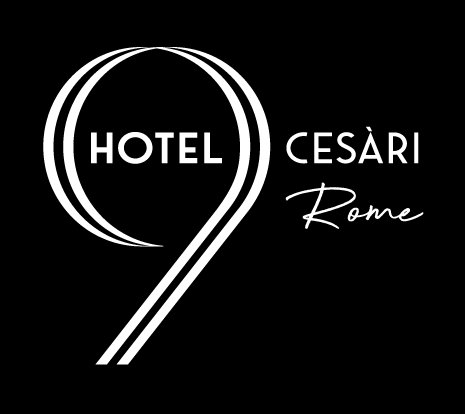Piazza Venezia
Piazza Venezia is a large square, entirely paved with stone, with dense traffic of cars and scooters. The square is lined with several historic buildings and monuments, including the Palazzo Venezia, a palace built in the 15th century for Cardinal Pietro Barbo, which later became the headquarters of Mussolini, Italy's Fascist leader, during the Second World War. Today, the palace houses a museum dedicated to the history of Rome, as well as government offices.
To the north of the square is the Basilica of Santa Maria in Aracoeli, a 13th-century Franciscan church considered one of the most beautiful in Rome. The basilica is located on a steep hill, accessible via a grand staircase that connects Piazza Venezia to the top of the hill.
Piazza Venezia is also an important meeting point for locals and tourists alike, with numerous cafés and restaurants lining the square. Tourists can enjoy spectacular views of the city from Il Vittoriano's panoramic terrace, which offers breathtaking views of the Colosseum, Roman Forum, Palatine, Circus Maximus and Monte Testaccio.
Il Vittoriano monument
It's hard to think of Piazza Venezia without mentioning the huge monument overlooking it, "Il Vittoriano", built for King Emmanuel II, the very first king of a unified Italy.
Il Vittoriano is an emblematic monument in Rome. It was built at the end of the 19th century to commemorate the first king of Italy, Victor Emmanuel II, and to symbolize the unification of Italy and the country's victory in the war against the Austro-Hungarian Empire in 1866. Il Vittoriano is also known as the "Altare della Patria" or Altar of the Fatherland, and is considered one of Rome's most important and emblematic monuments.
The project to build Il Vittoriano was launched in 1885, after the death of Victor Emmanuel II. The Italian government organized a competition to design the monument, and the winner was French architect Paul-Albert Bartholomé. However, the project was modified and developed by several other Italian architects, including Giuseppe Sacconi, who eventually led the construction.
Construction began in 1885 and lasted over 20 years. Il Vittoriano was built in white Botticino marble. The dimensions are gigantic, 135 meters wide and 70 meters high, with numerous Corinthian columns and white marble staircases. Since 1921, the monument has also housed the tomb of an unknown soldier and an eternal flame. You can also climb up to enjoy a sublime panoramic view from the terrace.
The monument is composed of several parts, including a large base with Corinthian columns, an equestrian statue of Victor Emmanuel II at the top, and two side wings housing the Italian Risorgimento national museums. The 16 sculptures in the foreground symbolize all the regions of Italy.
Il Vittoriano was inaugurated in 1911, in the presence of numerous Italian political and military figures. Since then, it has become one of Italy's most important symbols, and is often used to celebrate important national events.
Il Vittoriano is a true symbol, and Italians are very attached to it. A small palace has even been relocated, as it was blocking the view from Via del Corso.
Piazza Venezia is therefore one of Rome's most emblematic squares, offering a spectacular panoramic view of the city and its most important tourist attractions. It is lined with historic buildings and monuments, including the colossal Il Vittoriano monument, considered one of Italy's most important symbols. It's also a popular meeting place for locals and tourists alike, with numerous cafés, restaurants and boutiques lining the square and its surroundings. In summer, Piazza Venezia is often the scene of concerts, festivals and cultural events, attracting thousands of visitors.
The square is also an important transit point, with several bus and streetcar lines crossing it, as well as a nearby metro station (line B). From here, visitors can easily explore other parts of the city, such as Trastevere, the Vatican or the historic district of ancient Rome.
Piazza Venezia during the Second World War
Piazza Venezia also has a strong political and historical significance for Italians. It has been the scene of many important political events, including the speech of Fascist dictator Benito Mussolini, who delivered several speeches from the balcony of the Palazzo Venezia during the Second World War. Today, the square is a symbol of national unity and Italian democracy, and is often the site of political rallies and demonstrations.
Piazza Venezia is therefore one of Rome's most emblematic squares, located in the heart of the city's historic center.Lined with historic buildings and monuments, it is dominated by the colossal monument of Il Vittoriano. The square is an important transit and meeting point for visitors to Rome, as well as a political and cultural gathering place for Italians.Its central position makes it an ideal starting point for exploring the city and its many sights.
The square is just a 5-minute walk from the 9Hotel Cesàri, along Via del Corso, so don't miss out on this Rome must-see.
Piazza Venezia in Italian popular culture
Piazza Venezia has an important place in Italian culture, as a symbol of history and national identity. It is often depicted in Italian works of art, films, TV series, novels and poems, which highlight its majestic architecture and its role in Italian history.
Many Italian artists have depicted the Piazza Venezia in their works. In 1912, for example, the Italian painter Umberto Boccioni produced a painting entitled "La strada entra nella casa" (The street enters the house), depicting the Piazza Venezia as seen from the Palazzo Venezia. The famous Italian photographer Gabriele Basilico also photographed the Piazza Venezia, notably in his "Periferie" (Peripheries) series, which explores Rome's outlying districts.
Piazza Venezia has also been the setting for several famous Italian films.For example, it appears in Federico Fellini's film "La Dolce Vita", in which the main character, Marcello Rubini, played by Marcello Mastroianni, crosses the square on a scooter. The square also features in Fellini's film "Roma", which explores the city of Rome through the eyes of a filmmaker.
In literature, Piazza Venezia is often mentioned in Italian novels and poems, which evoke its historical and cultural significance. For example, Italian poet Giuseppe Ungaretti wrote a poem entitled "Piazza Venezia" in 1942, in which he describes the square as a symbol of the greatness of Rome and Italy.


